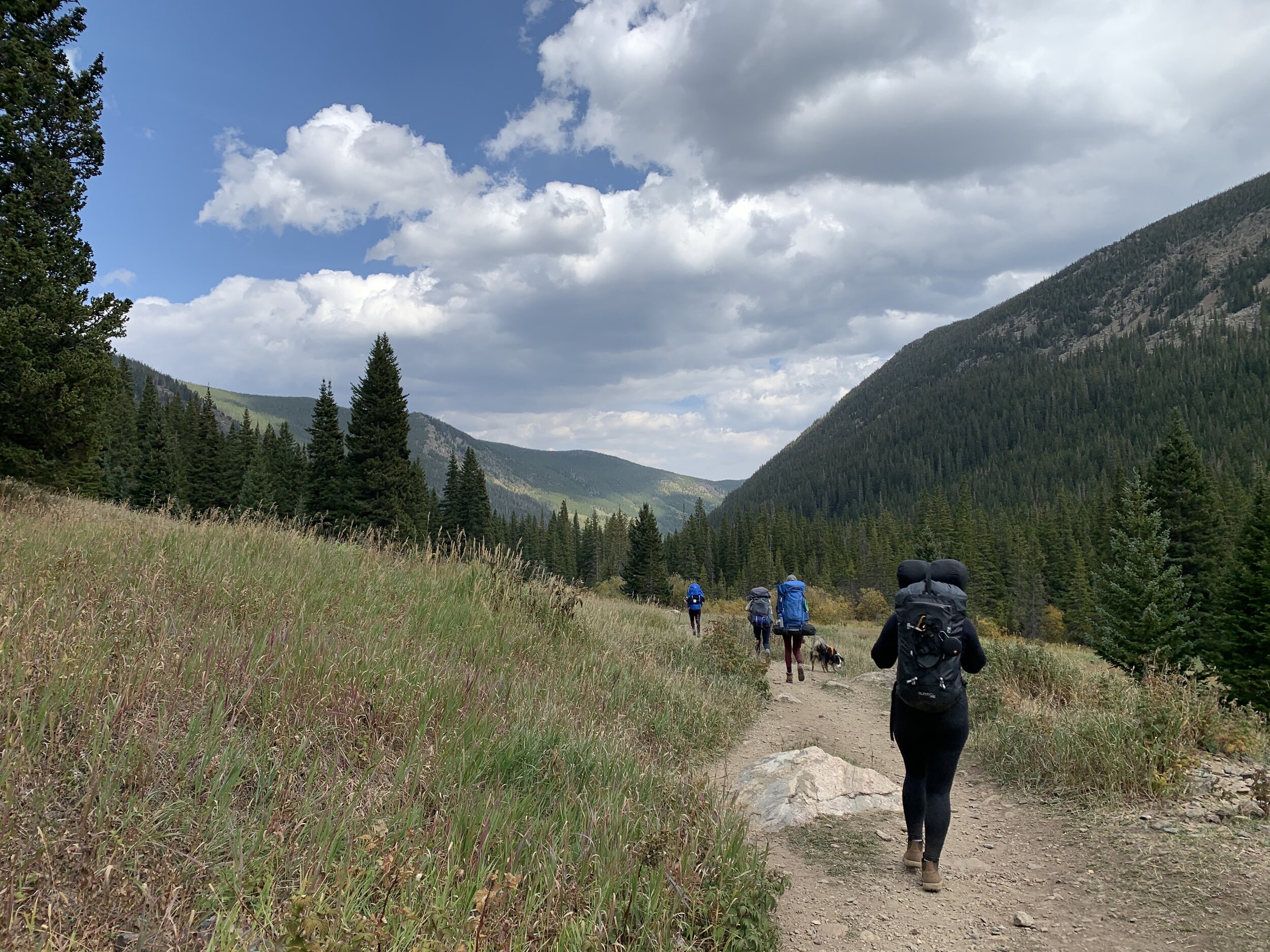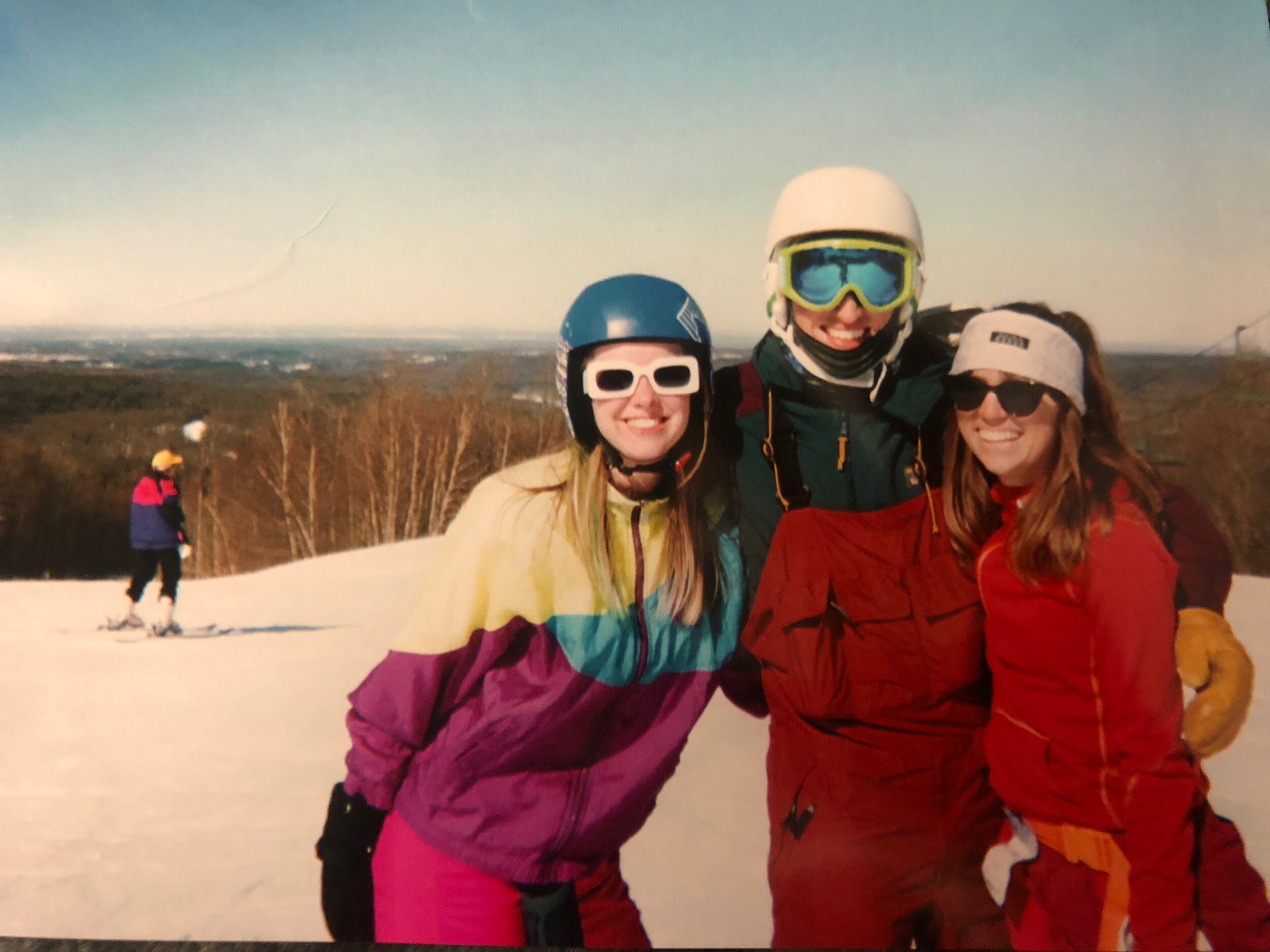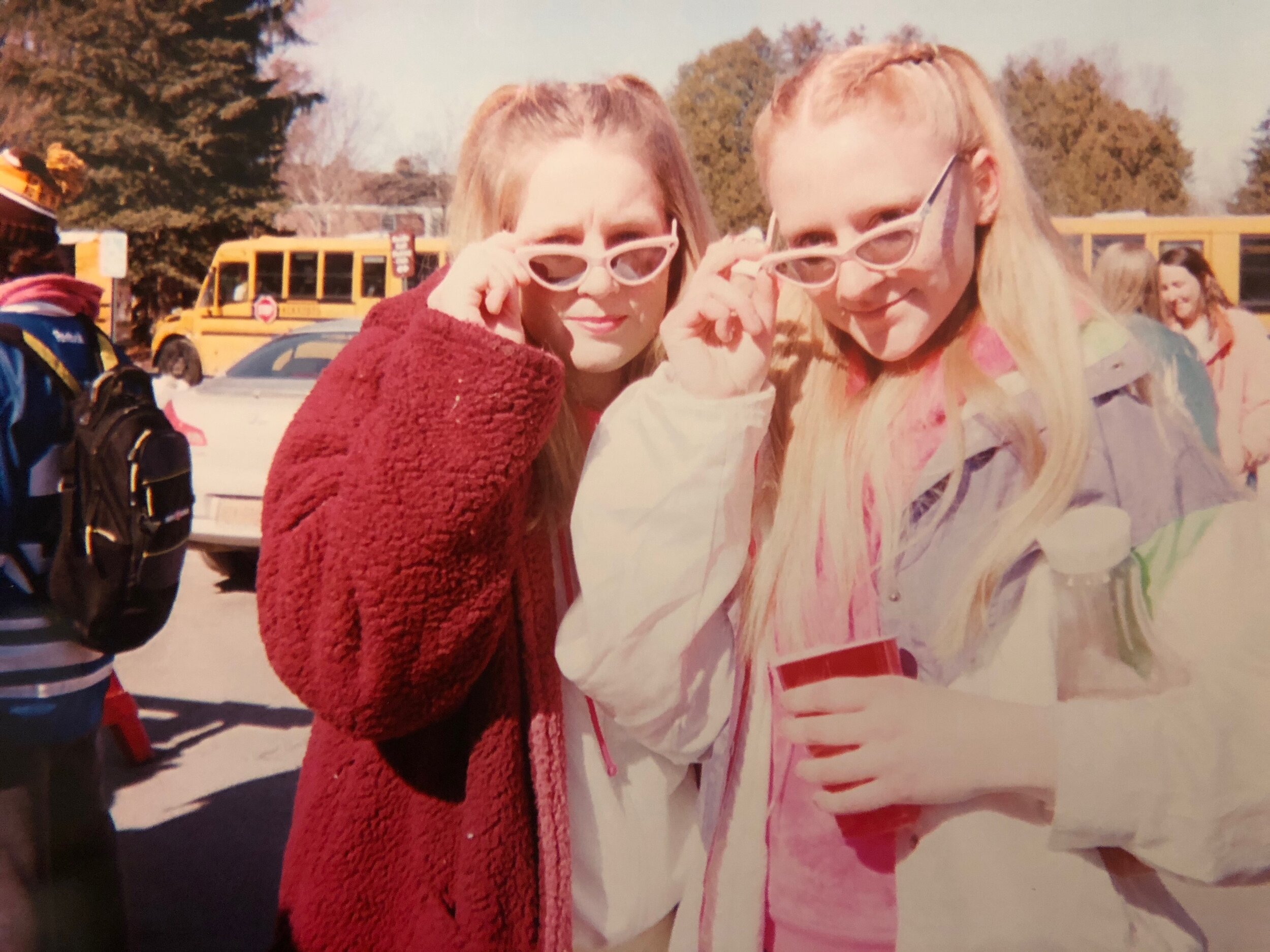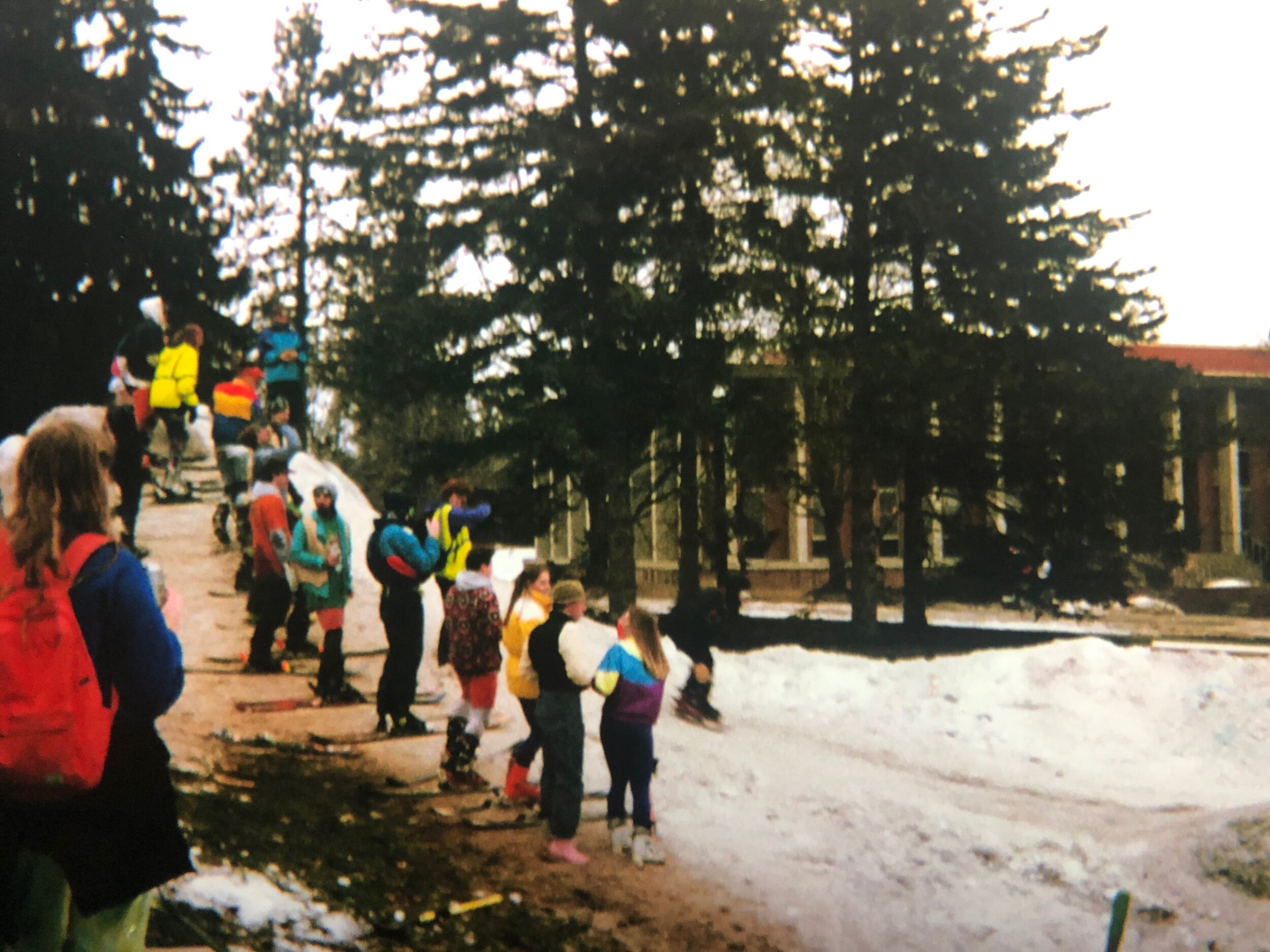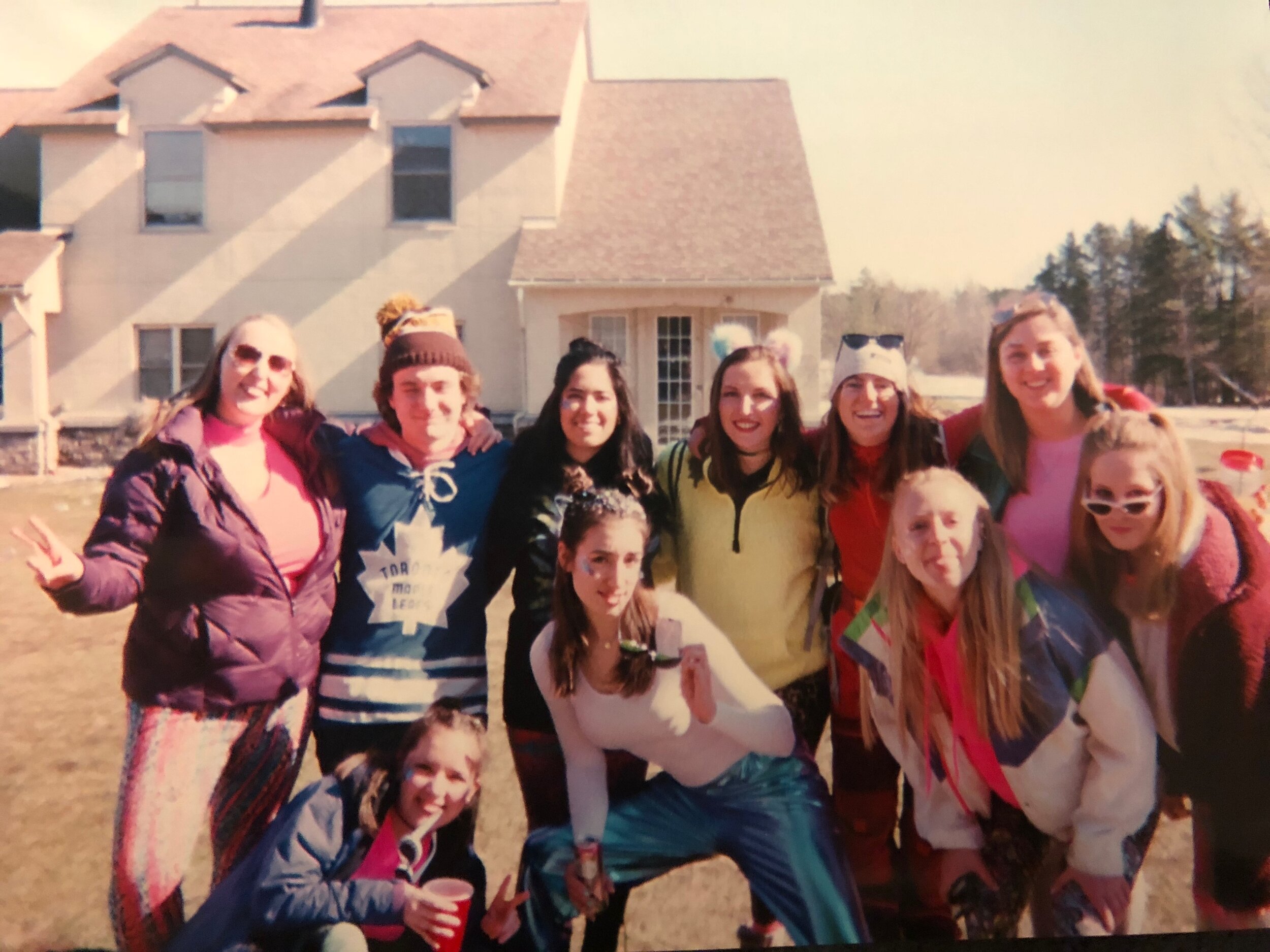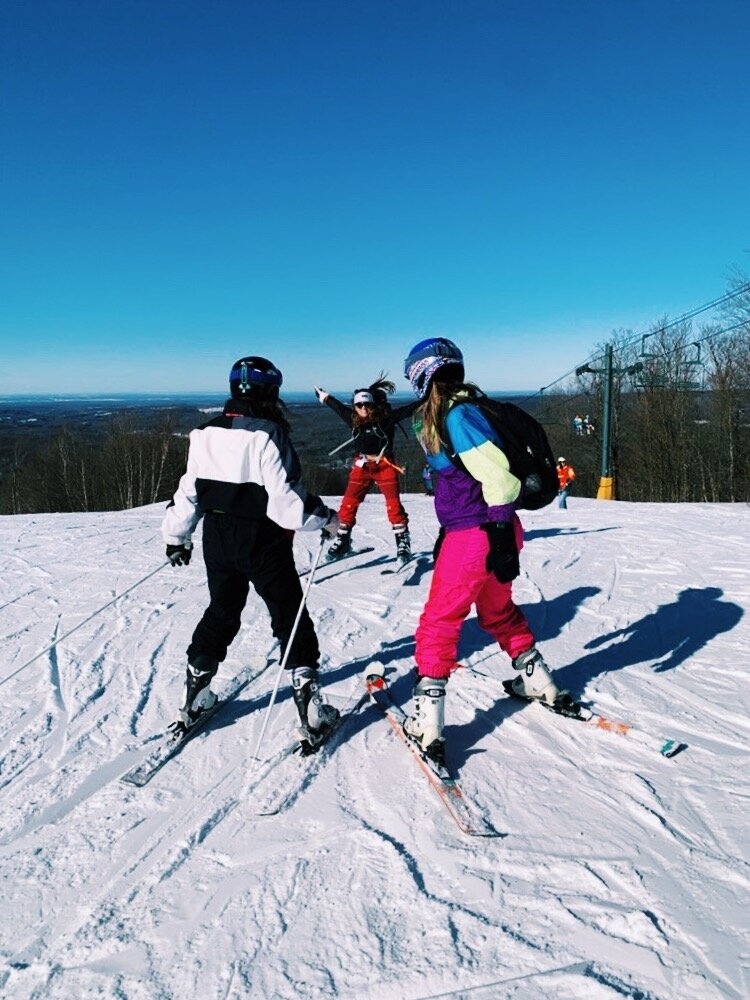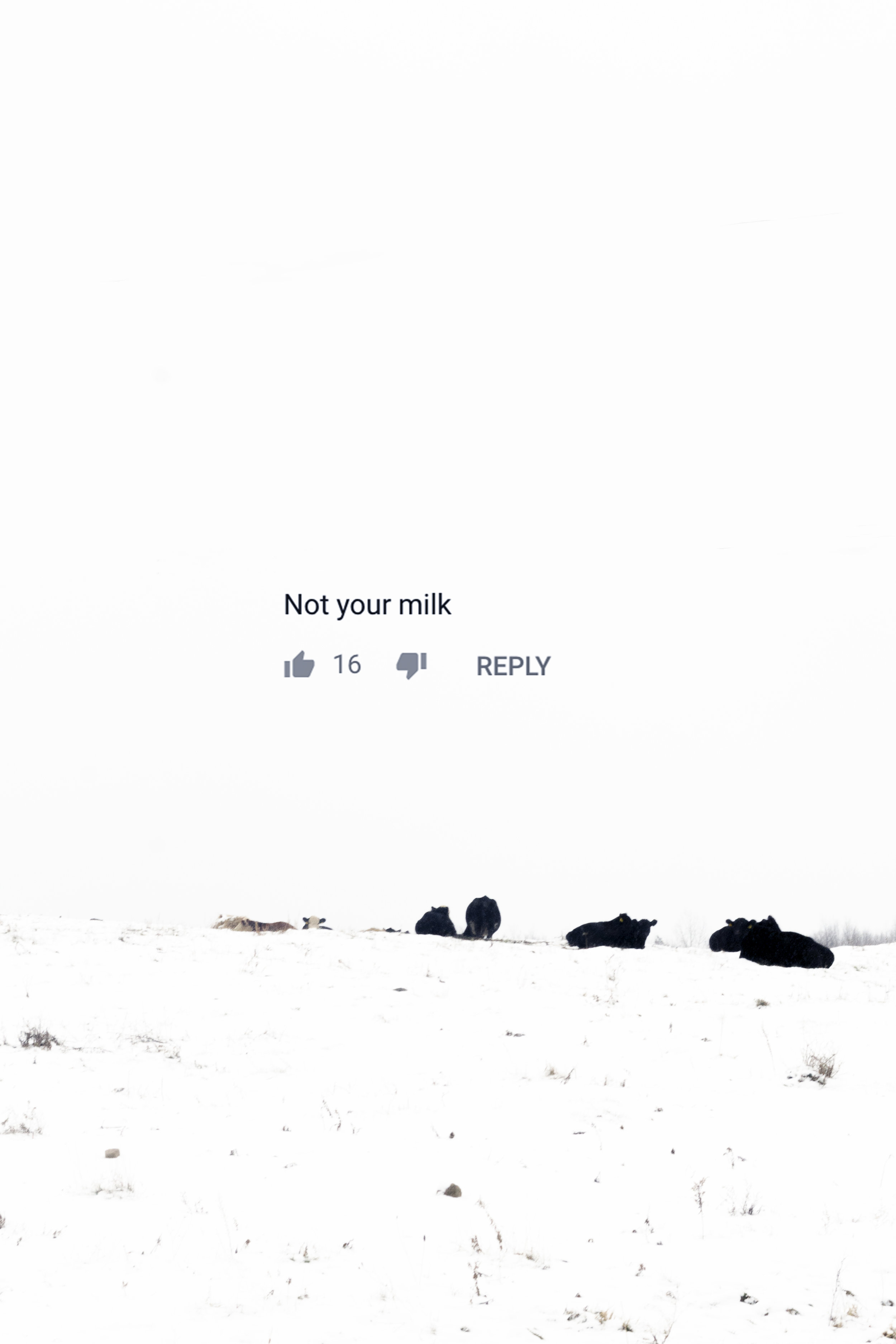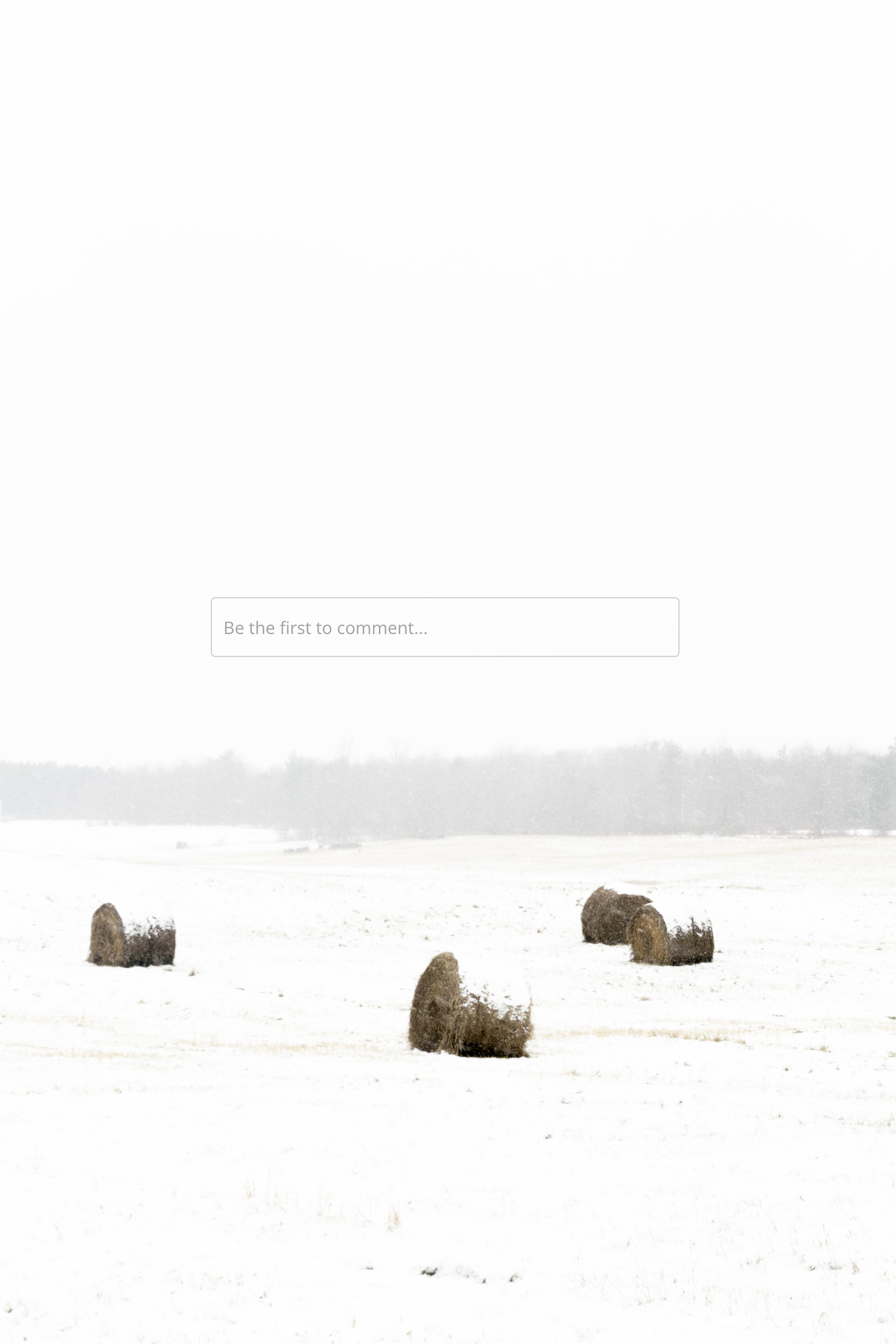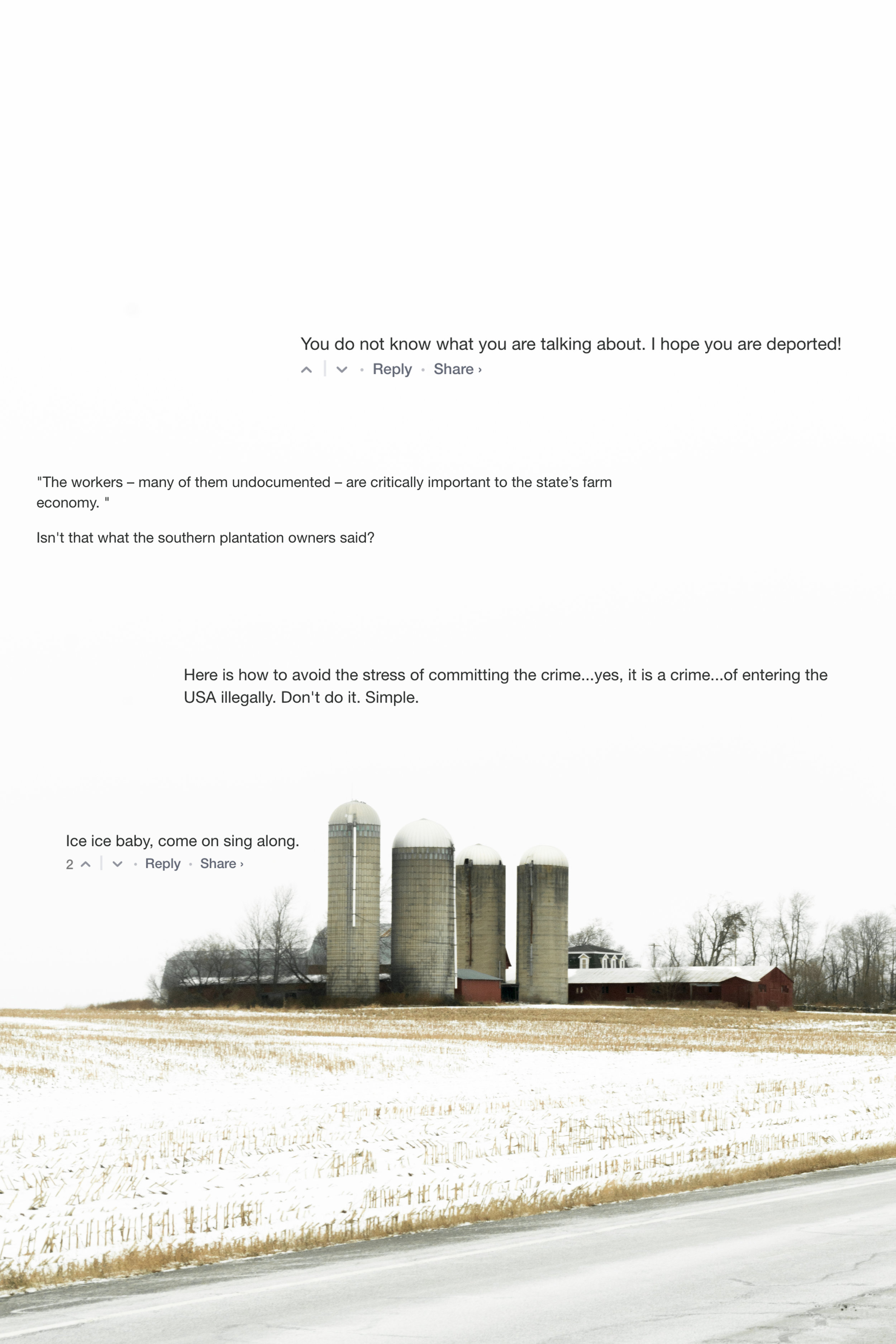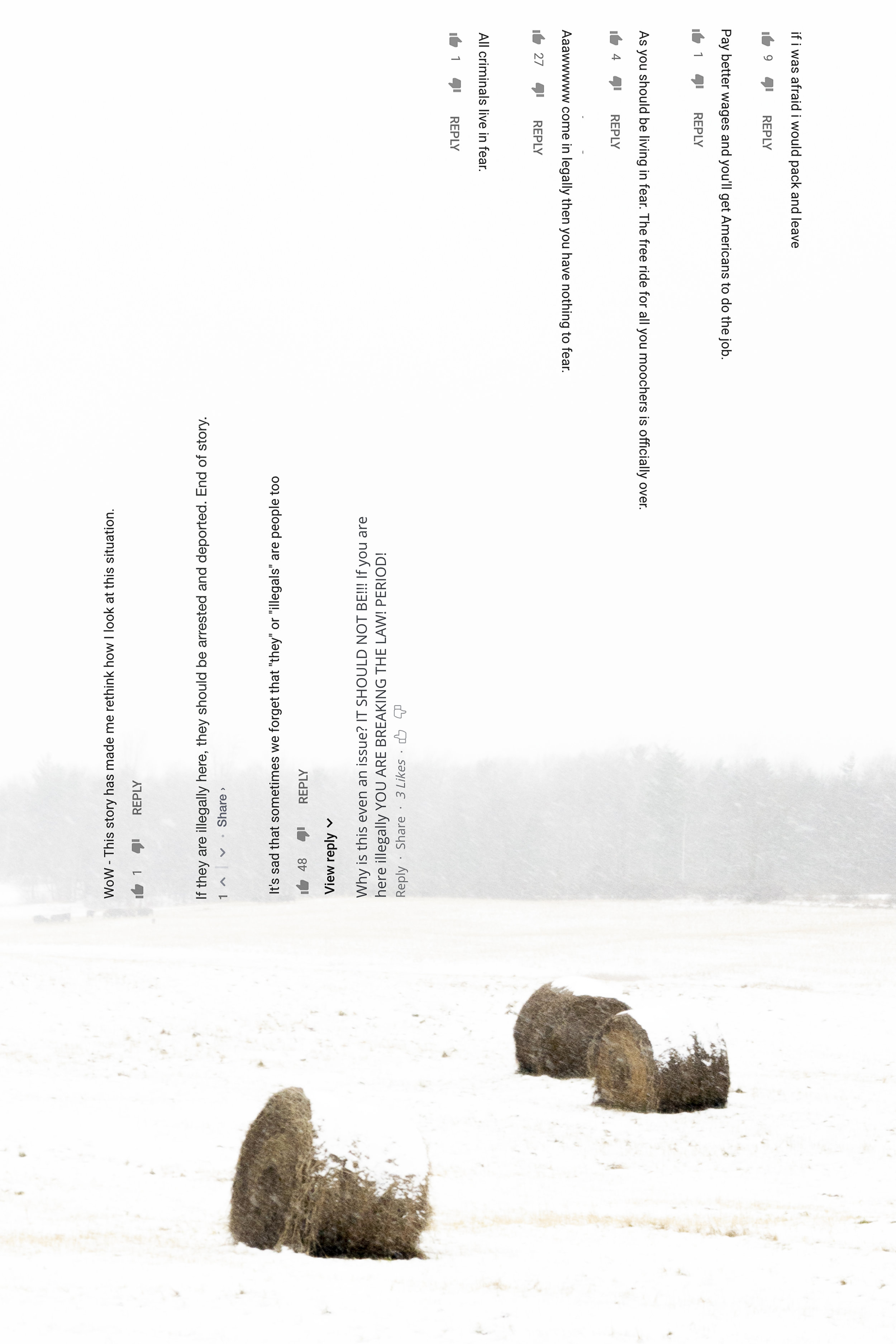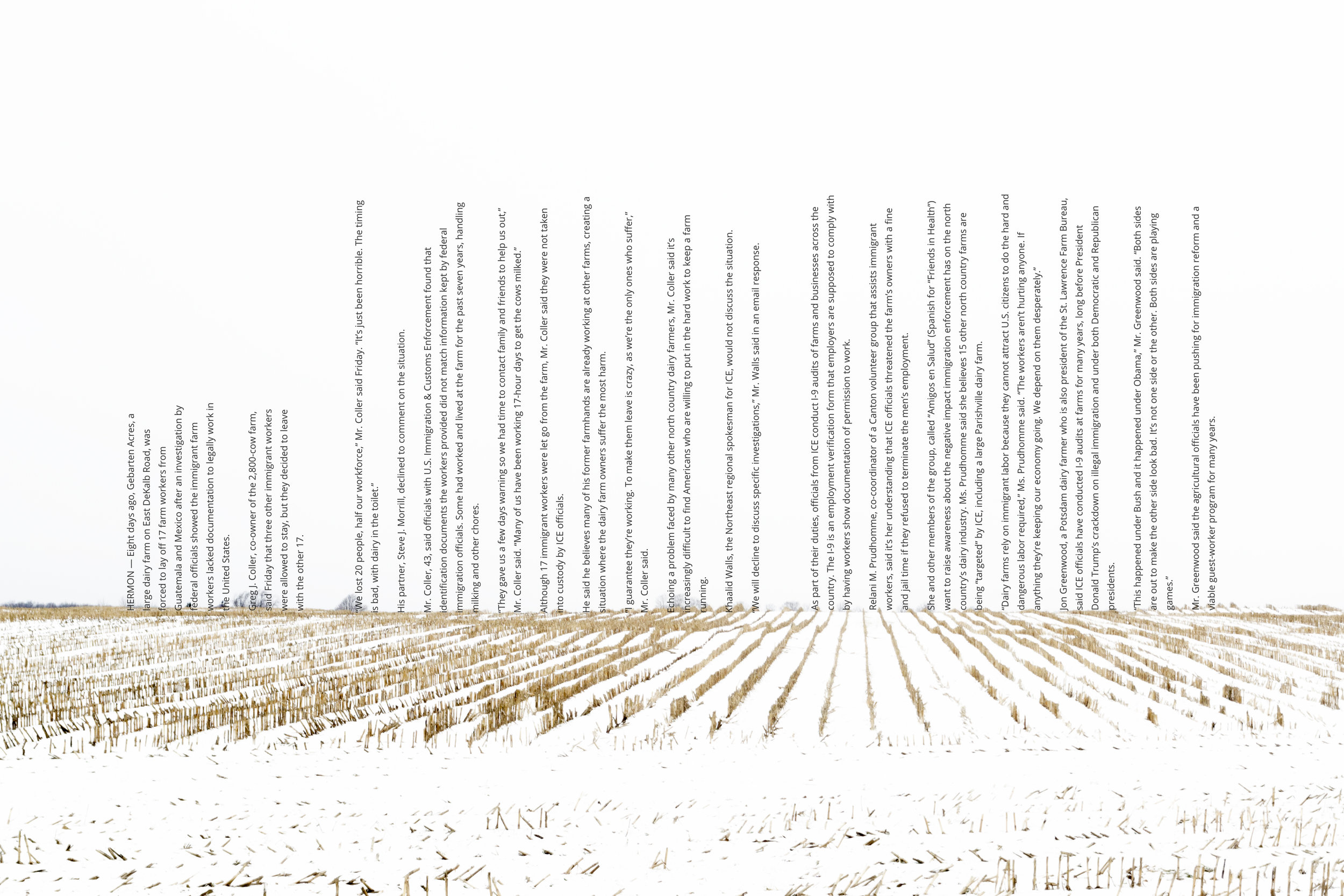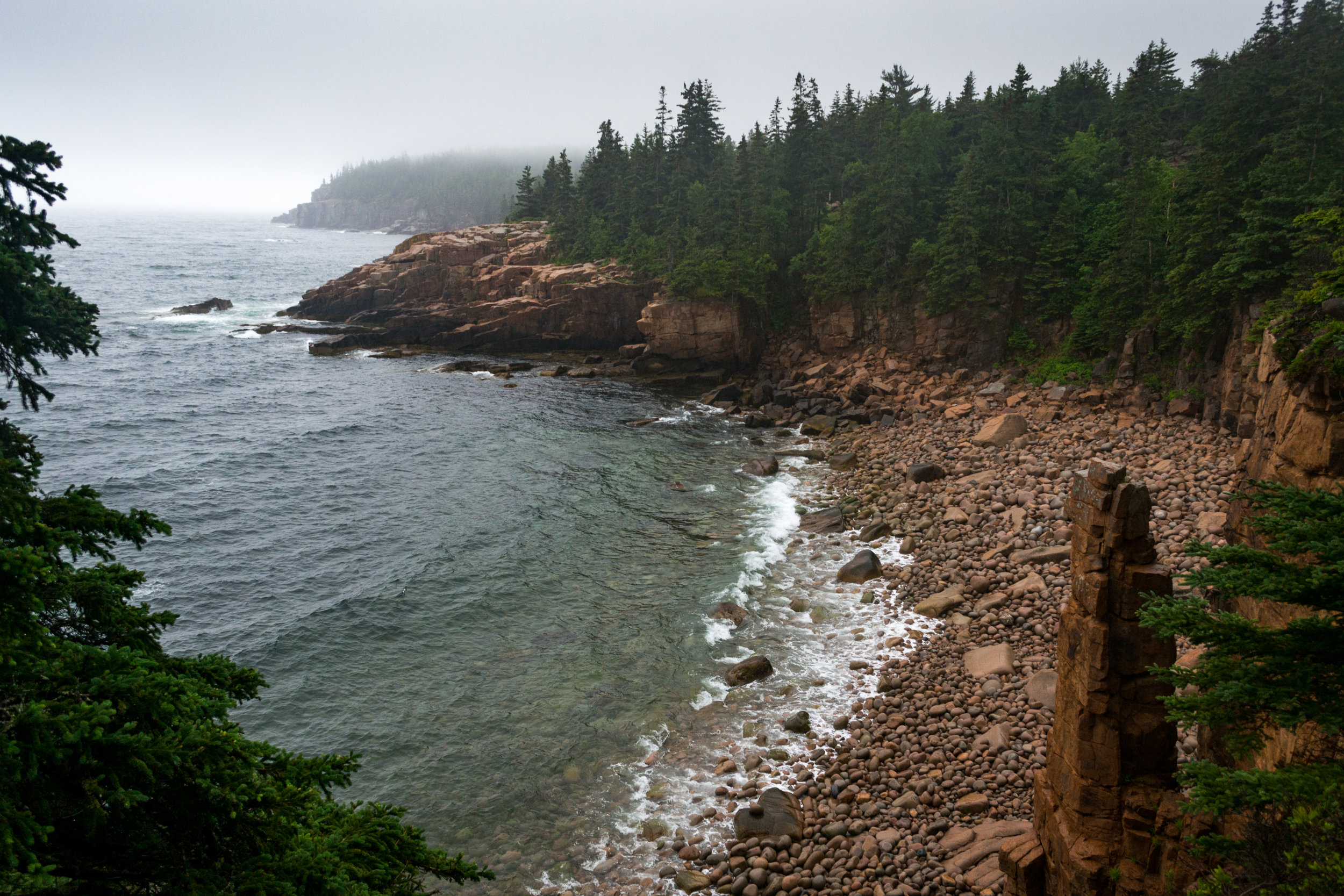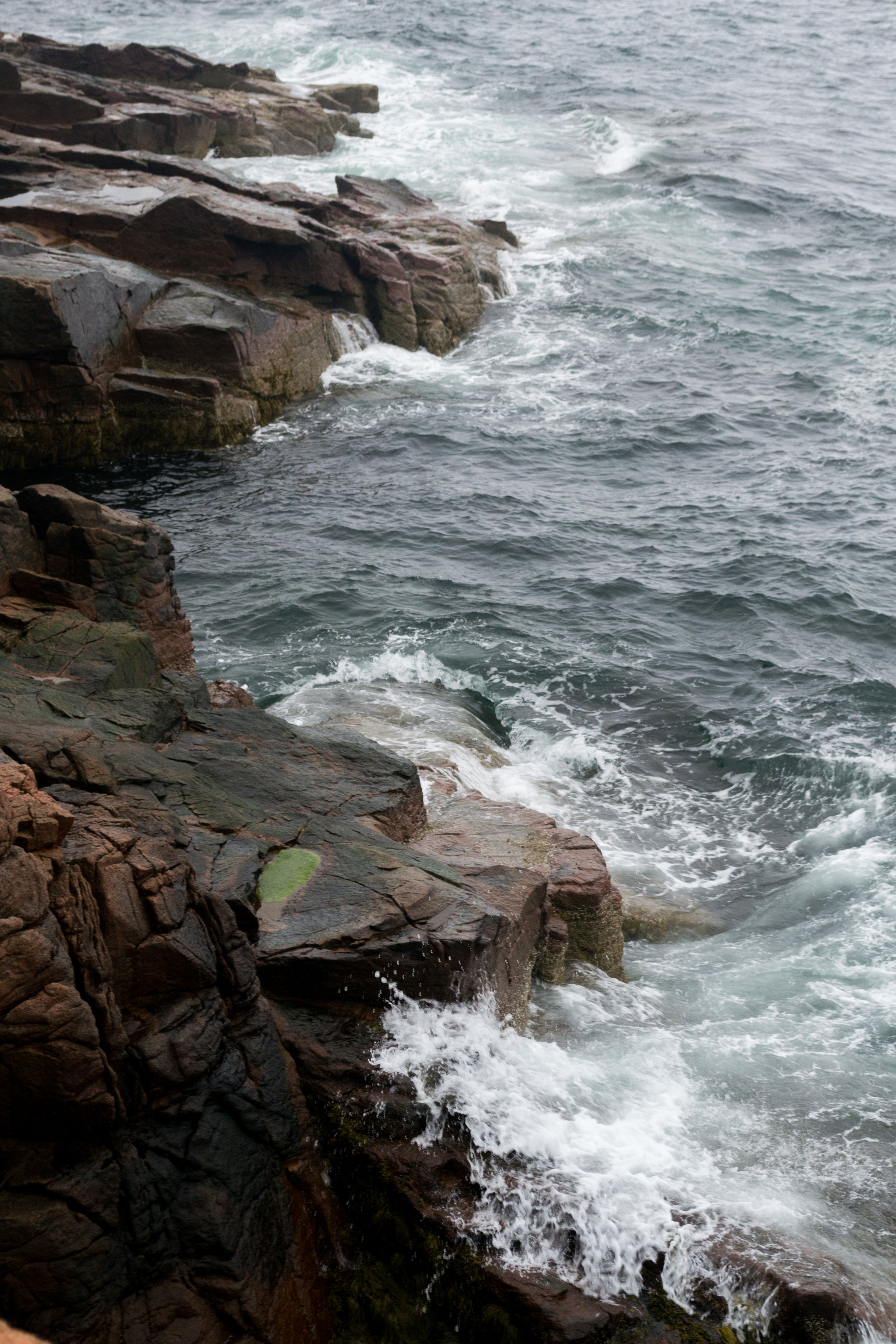Picture this: an 8 year old, terrified of heights, crying at the base of a bunny hill, dreading the fact that her parents dropped her off at this frozen tundra of a mountain. Sounds like a blast, right? That was my first memory of skiing. A twig of a child, a giant lilac purple helmet, round glasses smushed under goggles, and one massive fear of eating shit and hurting myself. I didn’t like the risk. Wait, let me rephrase that… I HATED risk. I enjoyed the safety of a magic carpet over the danger of falling off a chair lift. I craved a cat track over the slightest pitch of a green run. And man was that embarrassing. My childhood best friend was KILLING it, nailing her pizzas and french fries, automatically getting put into the advanced groups. I stayed behind, reluctant to try something foreign to me. How could anyone think this sport is fun?
Where it all began: Sunapee Mountain, NH 2007
The cold, icy slopes in rural New Hampshire seemed to be a glorified death trap, and I refused to step foot at ski school ever again. I changed my winter sport to swimming, which in hindsight was a terrible idea for a stick of a third grader with 0% body fat, but life went on. The next time I found myself on a pair of skis was in eighth grade, but not the way you’re probably thinking. I unfortunately decided to make my life a bit harder, by nordic skiing.
What’s better than feeling the adrenaline and fear of eating it down a steep, icy slope? Skiing up a hill… duh! I found myself in a team of ten high school misfits, taking on the rural New Hampshire winters in a different way… in skin tight, spandex suits, torturing ourselves on cross country trails. However, there was no terrifying risk in the nordic world, when you fell, it never hurt because most of the time you were just on small, rolling hills. The skis were so skinny and light you could pick yourself up with ease. It was, of course, embarrassing to fall, especially in front of a bunch of bi-standers at a race, but at the same time it was so easy to brush yourself off. I fell in love with this idea that I was truly earning the reward of a small downhill after what feels like climbing a mountain in skis. Who needs the macho energy of alpine skiing when you were honestly kicking more ass beating a bunch of girls in a 5k race?
The race face of pain, 2015
I found such a safe haven gliding alone, peacefully through the woods, over the crowded energy at a mountain resort. It was almost meditative, below the tree-line in my thoughts, only hearing the occasional chickadee in the distance. There seemed to be such an exclusivity to the alpine skiing world, I felt like such an outsider looking into a culture that cared too deeply about external appearances, how fast they went, what lines made them look superior to others. Maybe I just resented alpine skiers because they managed to face fear head on as little kids in ski school unlike me. And my god, alpine skiing is EXPENSIVE.
Despite my high school stink eye to alpine skiing, when I entered college, my relationship to skiing drastically changed. If anyone knows about the lovely campus of St. Lawrence University, you know that you’re in the literal middle of nowhere. Out in the foothills of the Adirondacks, there wasn’t much to do in the town of Canton in the winter besides the weekly trip to the local bar or maybe the international trip over to Ottawa if you’re feeling adventurous. Outside of actual studying, most of us gravitated to explore nature. And the student body was always pulled to the magic of Whiteface, two hours away from campus, every goddamn winter. It was a literal pilgrimage every weekend, and I had to fit in, right?
The guy I dated at the time was an avid skier. He was the kid that immediately excelled in ski school as a kid and didn’t have any risk analysis, he just went for it. He was the guy that raced his whole life, lived for the adrenaline of downhill speed, and had the finances to do it. Trips to Utah, California, Chile… you name it. The kid had been everywhere and anywhere to “find the stoke”. It was honestly a running trend of the people I met on campus, there were so many students with lush backgrounds who found fulfillment in their craft of skiing.
Of course I gave into this glamorized idea, sounds like nordic skiing wasn’t cool enough. I wasn’t pushing myself hard enough, and I needed to fit in. I found my nearest ski swap and invested in my first real setup since elementary school. I dusted off my old snow pants and my mom’s ski jacket, and the transformation began. How embarrassing… not having the newest gear as my friends, but it’ll do with my budget.
When I first went to Whiteface it almost felt like my first day of middle school. Weirdly, I was afraid of being perceived so I got pointers from my boyfriend.
“Carry your skis and boots like this”
“Wear your neck warmer like that”
“Ooh! And pull those front strands of hair out, that’s what all the girls do these days”
There we go, transformation is almost complete. Most of the excelling in alpine skiing is confidence and looking the part, right? If people see you as a good skier, no one will realize how scared you really are to fail.
From those first few mountains back on the saddle, I lived by that motto: look the part, and the rest will come after. Fake it till you make it as they all say! And honestly, I was so frustrated feeling this way. Why did I care how I was being perceived by others? I didn’t care about my appearance, skiing up the hills in nordic. Why was I so afraid now? Maybe it was the little eight year old in me, scared at the ounce of something new and slightly dangerous. Ashamed that I couldn’t be like my friend who excelled. This activity should just be fun, right?
As my skis started to straighten out over time, as I began to carve into the corduroy, those fears of being judged started to fade, I was honestly just having fun at the end of the day. I started to feel incognito while on the mountain, and I loved it. Feeling the burn in my thighs, gliding down icy blues. I started to feel fulfilled in the small wins, laughed at the hilarious wipeouts, and of course, the celebratory burrito in downtown Lake Placid afterwards. Every March came Titus, our school’s annual retro ski themed party at a little family mountain where we dressed up like idiots and skied to the beat of the band in the lodge.
Titus, 2020
Yet when I moved out to Colorado after school, the childish fear returned. These Rockies are no joke and the resorts are astronomically large so it’s a different game out here. Denver thrives on its large ski culture, and what if I couldn’t keep up with my new friends? What if I’m perceived as that slow “Jerry” on the hill? What if? What if? What if? I want to be seen as enough. I want to belong here.
The first time I clicked into my skis was at Keystone in November. Not the best choice, but it’ll do. Two runs open, hundreds of people anxiously wanting their first session of the season. Terrifying? YES. Honestly, it was a little scarring skiing in a literal traffic jam on a slope, but hey, I’m still here to tell the tale.
Despite the chaos, it was eye opening. I saw skiers from all backgrounds: small kids with their pizzas, ex-racers, 70 year-old veterans with pom pom hats as their helmet, college bros in sports jerseys with GoPros strapped to their helmet. No one was judging each other, just trying to live out their little skiing fantasies without crashing into someone else.
Last winter I found myself facing my childhood fears more than I ever had before. Want to hike to the top of this peak and drop into this bowl? Sure. Ski these trees with us? Why not. Race down this empty blue to the base? Hell yeah!
Yet, I also started the confidence to say no when needed. Want to try and jump off this small ledge? Eh, not today. Want to follow me down this poorly covered trail? No way in hell. Follow us down this tree run? No thanks, going to take it easy, I’ll meet you guys at the bottom.
I started to embrace my limits, and told myself it was okay to go my speed and my speed only. I didn’t need to go someone else’s pace to prove that I was good enough to be there with them.
A couple days ago, I went skiing for the first time completely by myself and I was terrified. What am I going to do without the encouragement of my friends? Am I just going to revert into 8-year-old Kelsey? Call it quits early in the day? Well, thankfully, it didn’t turn out that way.
I found myself talking to strangers on the lift, people from all over the country, some locals and others far away from home on vacation. Everyone was equally excited for the sunny, bluebird day, and just having fun. I didn’t feel like an outsider looking into a completely different, macho culture, I was one with the pack.
It was almost meditative, alone again in my thoughts just like the nordic skier I used to be. Gliding down wide open trails, eating it and getting back up, being in silence. No external pressure of how to act, how to present myself.
Midday, I found myself doing something 8-year-old me would have an aneurysm about… I hiked up a peak, to ski down a steep bowl… alone. For the first time no one asked or peer pressured me to do it, I just clicked off my skis and went for it. It sure as hell wasn’t easy. While short, the hike was deceivingly steep and the summit was close to 13,000 ft. I felt my heart beating through my chest from the elevation, literally stopping every five steps to catch my breath. Why the hell did I do this? Whatever, ignore the pain, we’re almost there. When I eventually made it, I felt like Neil Armstrong. Planting my poles into the snow as if they were flags, it was one small step for myself and one massive leap for my confidence. You could see everything so clearly. Copper down to your left, Keystone far out to the right, and huge snow capped peaks in between. It all felt so similar to the fulfillment I felt when I completed a nordic race in high school, just a little more scenic.
Even though there were plenty of other skiers at the top, I felt blissfully alone in the sun and burning wind. In the chaos of nature, I was calm, listening to the beat of my heart soften as I regained my energy. As I made my way down the bowl, I didn’t worry about the perfect line, I focused on the burning power of my thighs as I practiced my slow turns in the weighted powder. When I made it to the end of the trail, I turned around and couldn’t believe what I just did. I did THAT. I can’t believe that I did it alone. I can’t believe I trusted my abilities and didn’t let the fear of risk pull me back.
Moral of the story? Definitely a cheesy one: never let the fear of perception and risk get in the way of moving you forward. There’s nothing wrong with failing, looking like an idiot, and eating shit, because it will ultimately lead you towards finding true magic.
Top of Peak 6 at Breckenridge, a few days ago







